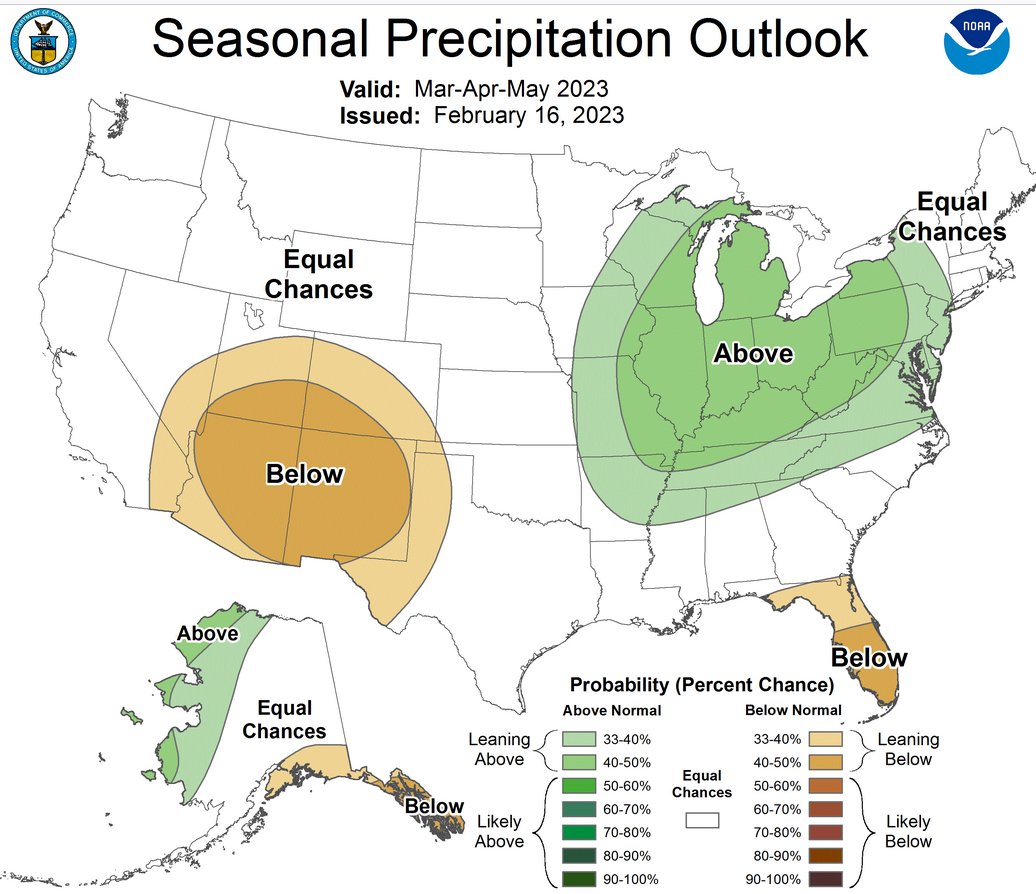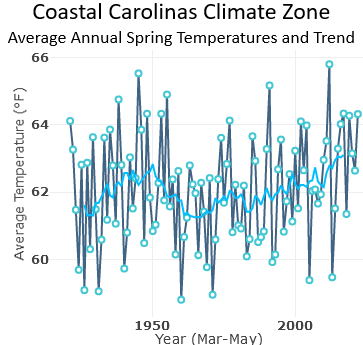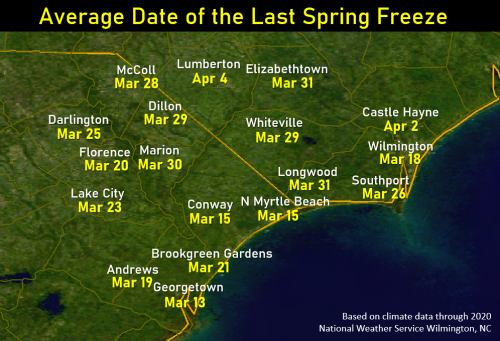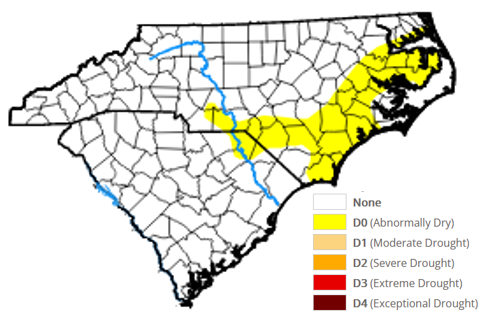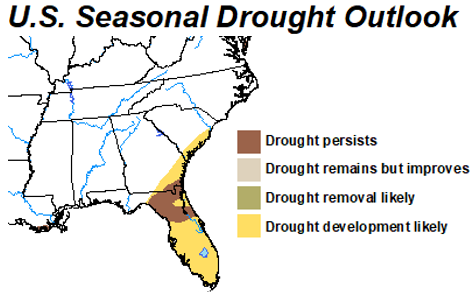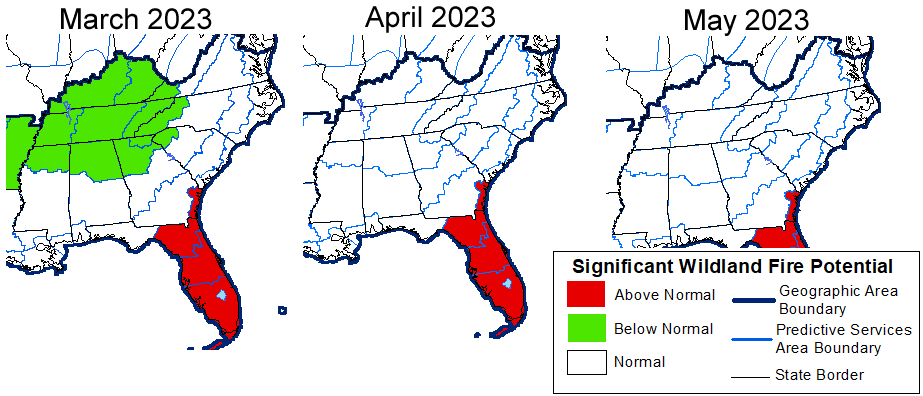After a winter that was the sixth warmest on record in Wilmington and the ninth warmest in Florence, the NWS Climate Prediction Center predicts increased chance of below normal temperatures through Marchfollowed by one increased chance of above normal temperatures later this spring. Seasonal precipitation totals are projected to have about an equal chance of falling below, near, or above normal ranges this spring.
|
The CPC temperature outlook shows increased potential below-normal temperatures persisting through the end of March, followed by above-normal temperatures for the remainder of spring. |
The CPC precipitation outlook for spring 2023 shows an equal chance of below, near, or above normal precipitation |
El Niño and La Niña have significant effects on weather across the United States and are also predictable on seasonal timescales. The La Niña pattern we experienced this winter it has finished and has been replaced by neutral conditions this spring as ocean water temperatures in the tropical eastern Pacific Ocean have returned to normal.
An upper-level front developed over the eastern United States on March 8, bringing temperatures much cooler than those seen in February and early March. Long-range weather models indicate that this low should remain over the eastern United States for most of this month, favoring below-normal temperatures. Beyond the scope of these weather models, we typically look to El Niño or La Niña to aid seasonal forecasting — but with a neutral ENSO pattern now in place, the increased chance for above-normal temperatures forecast later this year spring is mainly a result of ongoing climate change.
In the past 40 years there have been five times when La Niña ended in late winter and was replaced by neutral ENSO conditions for spring: 1984, 1996, 2001, 2006 and 2009. Unfortunately none of these years saw warm temperatures or a persistent upper level that crosses the eastern United States, as we experienced last winter. This vast difference in the observed overall weather pattern diminishes the value of these previous years as a relative to what we may experience this spring.
Freezing spring
Consistently above-average temperatures from January to early March caused plants to bloom and leaf out ahead of their normal schedule. The Growing Degree Days tally, a measure of how favorable temperatures were for promoting plant growth, showed well above normal values in early March. This means that trees, shrubs and grasses have likely experienced advanced levels of growth for this early in the year. Even if the last freeze were to occur close to the climatological date this spring, there would still be agricultural impacts. A later than normal freeze would cause even more significant impacts.
|
Graduate Development Days (GDD) for Wilmington, NC and Florence, SC through March 7th. They have been recorded well above normal values, indicating a rapid rate of plant growth for the beginning of the year. Graphics courtesy of I AM. |
The average date of the last spring freeze varies from March 13 in Georgetown, SC to April 4 in Lumberton, NC, but there is considerable variability from year to year based on weather conditions. Click below for a historical review of spring freeze dates for various locations in the eastern Carolinas.
|
|
|
Precipitation and Drought
Spring is typically one of the driest times of the year in eastern Carolina with average monthly precipitation being less than 3 inches for many locations. This is because the jet stream lifts northward during the spring bringing fewer wet storm systems, but the moisture usually hasn't increased enough to support extended afternoon storms like in the summer.
With La Niña now gone and neutral ENSO conditions favored to continue into spring, there are no reliable climate signals favoring consistently above or below normal rainfall.
Drought conditions improved significantly over the winter, and only a portion of eastern North Carolina is still classified as “abnormally dry,” the lowest drought classification used in the US Drought Monitor. Given current conditions and projected precipitation this spring, the Climate Prediction Center indicates that drought may develop again in parts of coastal South Carolina.
|
US Drought Watch as of March 9, 2023 |
The Seasonal Drought Outlook from the CPC shows the development of drought conditions is likely this spring along a portion of the South Carolina coast |
Spring usually sees a change in rainfall patterns as the season progresses. Periodic winter-like rainfall in early spring becomes less frequent in April and May, replaced by shorter and heavier showers and thunderstorms. The potential for severe thunderstorms also increases throughout the spring due to warming temperatures from longer days and higher sun angles. Hail and non-tropical tornadoes are more common during spring than any other time of year in the eastern Carolinas.
|
Summary of severe weather across the area served by NWS Wilmington, NC. (click graphic for larger version) Hail and non-tropical tornadoes are more common in spring than any other time of year. Severe storms with damaging winds become more common in April and May, but peak during the summer months. |
Fire hazard
Meteorologists with the National Interagency Fire Center (NIFC) track trends in drought, fuel moisture and plant growth to create maps that highlight wildfire hazards. Their outlook shows a near-normal fire risk for this spring season. Spring continues to be the peak season for wildfires in eastern North and South Carolina. Strong sunshine, relatively low precipitation totals, and frequent cold fronts followed by dry winds can create conditions that can favor the rapid spread of a wildfire.
Avoid outdoor burning on days with low humidity and gusty winds. Check out our latest Fire weather forecast to see if conditions will allow safe burning.
|
National Interagency Fire Center (NIFC) assesses wildland fire potential this spring |
Coastal flooding
The full moon will appear this spring on March 7th, April 6th and May 5th. The new moon occurs on March 21st, April 20th and May 19th. Fortunately, there are no periods of unusually high tides expected to occur solely due to astronomical tides. Any period of strong onshore winds or nearby significant low pressure could lead to minor coastal flooding this spring, but the risk appears lower than usual.
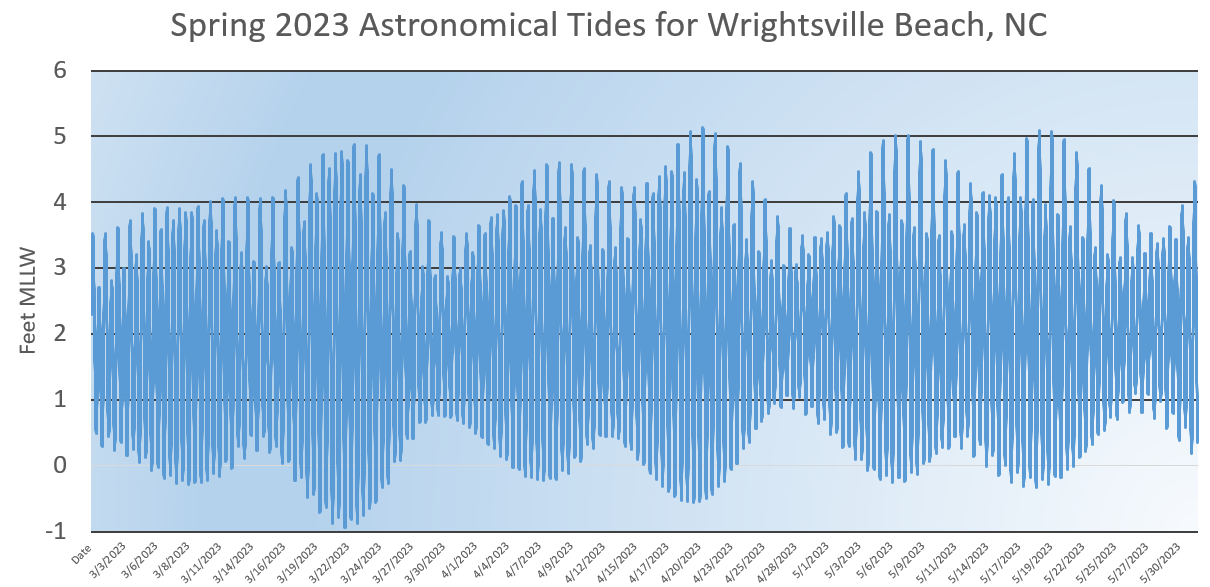  |
For astronomical tide predictions, see NOAA Tides and currents page. For local total water forecasts that incorporate the effects of weather and wind on coastal water levels, check our local AHPS pages for Wrightsville Beach, Myrtle Beachand the Cape Fear River in Dthe city of Wilmington itself.
More information
Page updated: March 10, 2023
Research and Page Author: Tim Armstrong




